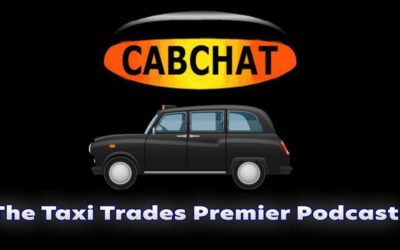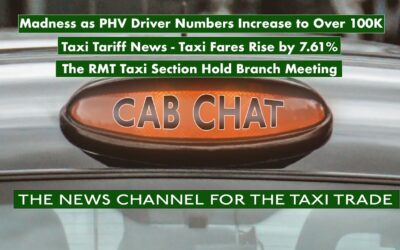by Timothy B. Lee on December 17, 2014
My first day as a Lyft driver wasn’t going well. After dropping off a passenger in Arlington, Virginia, I forgot to tap the “drop off” button in the Lyft app to indicate that the trip was over.
I didn’t discover my mistake until 90 minutes later. As a result, the customer got a nasty surprise: a $44 bill for a ride that should have cost about $7 (a Lyft administrator corrected the charge a few hours later, after I pointed out the problem). This was bad for me too, because during those 90 minutes I couldn’t pick up a new passenger.
Oh, and I had one other problem: the woman had left her keys in my car.
Lyft drivers don’t have access to the full names or phone numbers of passengers, but I was able to figure out my passenger’s work number based on where I had dropped her off. By the time I called her, it was 5:30 on a Monday afternoon. After four hours on the clock, I had gotten only three customers. And now, instead of picking up customers during the busy rush-hour period, I had to drive back out to Arlington in bumper-to-bumper traffic to drop off the keys.
My experience left me skeptical that drivers will be able to make anywhere close to $30 per hour
I would pick up two more passengers before finally calling it a night around 7:30 pm. All told, I spent five and a half hours on the clock and made $48. That’s less than Washington DC’s minimum wage — even before you subtract money for gas.
Things got better later in the week. I wound up working 50 hours, earning almost $600 in fares. And I actually made a lot more than that. Lyft paid me $1,500 (which I’ll be donating to DC Central Kitchen) under a program that guaranteed drivers would make $30 per hour if they worked 50 hours. In other words, Lyft paid me more than $2 for every dollar in revenue I generated for them.
That absurdly generous compensation, funded by millions in venture capital, is part of Lyft’s strategy to expand its roster of drivers in order to better compete with Uber. Obviously, these deals can’t last, and my experience left me skeptical that drivers will be able to make anywhere close to $30 per hour without them.
Yet that might not matter. When I talked to other drivers, they told me that they appreciated the flexibility of driving for Lyft. Full-time Lyft drivers can set their own hours and adjust when they drive to fit other things happening in their lives. And for those who don’t want to drive full-time, Lyft is a way for anyone with a car and a few hours of spare time to supplement their income. That may draw in drivers even if earnings aren’t very high.
How to become a Lyft driver
Back in September, I was driving to a Wendy’s parking lot near Washington’s Union Station to get a personal initiation into Lyft driving. I was about to meet my “mentor” for the closest thing Lyft drivers have to a job interview. My mentor looked like he was around 30, sporting a scraggly beard and driving a Honda Element.
He took pictures of my car, checked that my headlights and windshield wipers worked, and had me drive around for a few minutes to confirm that I don’t drive like a lunatic. We returned to the parking lot and he said he thought I’d be a good Lyft driver, because I had a good personality and “seemed cool.” Before parting, we performed the official Lyft greeting: the fist-bump.
The fist-bump is part of Lyft’s effort to brand itself as the friendlier, more likeable car-sharing service. My mentor told me he chose Lyft over Uber because he prefers the Lyft vibe. (I chose Lyft for a more pragmatic reason: driving for Uber wasn’t an option because my 2003 car is too old.) He finds the traditional taxicab dynamic — in which the passenger sits in the back and doesn’t talk to the driver — a little creepy.
Unlike Uber, Lyft encourages passengers to sit in the front. This was reinforced by the training videos I watched on my smartphone during the application process. Passengers in the videos always sat in the front, and they all fist-bumped their drivers when they reached their destinations.
The sitting-in-the-front thing has caught on with some real customers — about a third of my passengers did so. Fist-bumping isn’t as popular. I had only two or three passengers fist-bump me all week. I never tried to initiate a fist-bump myself. It just seemed too awkward.
Nor did I get one of those famous Lyft mustaches for my car. My mentor told me that the giant pink mustaches on the front of the car were being phased out. He had a smaller and more tasteful pink mustache on his dashboard, but I didn’t even get one of those.
My long, strange trip to Maryland
At 6 pm on Friday, I was in Foggy Bottom, the neighborhood just west of the White House that’s home to George Washington University. I’d just been hailed by a group of undergraduates who needed a ride to a party at one of the many embassies in the area.
One of the young men sat in the front with me, the other four students piled into the back, with one girl on the other’s lap (this probably wasn’t legal, but I figured it wasn’t too dangerous since we would be on city streets and wouldn’t be traveling very fast). My passengers were loud and excitable, interrupting each other to trade gossip about how who was going on spring break — and with whom — and how they liked their semesters abroad in the Middle East.
Almost immediately after dropping them off, I got hailed to an address nearby in Georgetown. An older man came out, sat in the back, and asked to be taken to Bethesda, Maryland, eight miles away. The 29-minute trip was the week’s longest and cost about $20. He seemed intent on reading emails on his smartphone, so we mostly drove in silence. He did periodically speak up to tell me which route to take, directions that were usually identical to what Google Maps recommended.
He said he thought I’d be a good Lyft driver, because I had a good personality and “seemed cool”
When I dropped him off, I was pretty far out in the DC suburbs, nearly out to the beltway that I think of as the edge of the civilized world. The map on the Lyft app showed pink rectangles — indicating “prime time” zones where drivers temporarily got bonuses of 25 to 100 percent — covering major sections of the city, but all were far from where I was. I was eager to get back downtown.
But Lyft had other ideas. I’d barely pulled out of the driveway when I was hailed by another passenger in Rockville, even further out in the Maryland suburbs. I drove to a CVS in a sea of strip mall parking lots where a woman was waiting with her boyfriend — or maybe her husband. He was slumped over, leaning on her.
They got in the back. “Here’s your medicine,” she told him. “Do you have your keys?”
I asked the woman if her partner was OK. “You men,” she told me. “Whenever you get sick you’re such babies.”
He lay down and fell asleep on her lap, snoring for the remainder of the 15-minute trip.
After I dropped them off, it would be a half-hour drive to get close enough to the city to pick up another passenger.
How smartphones are expanding the taxi business
The remarkable thing about my CVS pickup in Maryland is that it happened at all. The traditional system of taxi dispatching made this kind of pickup so inconvenient in the pre-smartphone era that it almost never happened.
When a suburban customer called for a cab, the dispatcher might not have a car anywhere near the pickup address. And even if the dispatcher did send a car, there was no guarantee it would show up in a timely fashion. Suburbanites might have scheduled a taxi ride to get to the airport. But in most other cases they didn’t bother.
Smartphone-based taxi networks like Lyft are changing this equation in several important ways. For one thing, realtime GPS data gives customers greater certainty about pickup times, both before and after calling a car. Beforehand, a customer can get a clear estimate of how long it will take for a car to arrive. Then after hailing a car, she can watch it make progress toward her house in real time.
Lyft is a way for anyone with a car and a few hours of spare time to supplement their income
And the way these networks compensate drivers makes no-shows less likely. Lyft, for example, rebates half of its 20 percent commission to drivers if they work at least 30 hours in a week, and the full commission if they work 50 hours. However, these bonuses are only available if drivers accept 90 percent of the rides offered to them. So drivers have a strong incentive not to routinely blow off ride requests, even if they’re in inconvenient locations.
Most important, Uber and Lyft are building networks of vehicles that are denser than any that came before. That makes a big difference.
The average time it takes for a car to reach a customer is an inverse function of the number of cars a network has on the road. Quadruple the number of cars in an area and you halve the average time it takes for a car to reach you. As Lyft’s fleet grows, the service will become attractive in areas where people rarely took conventional taxicabs. And that, of course, creates a positive feedback loop: more cars on the road means shorter wait times, which leads to a better customer experience, higher demand, and even more cars on the road.
/cdn0.vox-cdn.com/uploads/chorus_asset/file/2562742/Lyft_Illustration1.0.png)
Higher density is good for drivers, too. The more passengers Lyft has, the shorter the distance drivers need to go to reach the average passenger. My first trip of the week illustrates the problem. I got called to a location that was a five-mile, 18-minute drive away from where I happened to be. The passenger needed a ride to the nearest Metro stop, a 1.2-mile, six-minute trip. I earned Lyft’s minimum fare, $5. If every trip was like that, I wouldn’t make much money; more drivers on the road make these long pickup trips less common.
Lyft also helps with a common taxi driver complaint: taking a passenger from the city to the suburbs, and then having to drive back to the city with an empty cab. As Lyft’s footprint expands deeper into the suburbs, its drivers will be more likely to find a passenger for the return trip.
That didn’t happen during my trip to Maryland. But there were at least two times when I took one passenger out to the Virginia suburbs, and then was able to pick another passenger up in Virginia and take him or her back into the city. And as Lyft’s network grows, this kind of thing should become more common.
Lyft’s “get $15, pay $30” business model
These advantages of scale, which economists call network effects, help to explain why Uber and Lyft are rushing to grow so quickly. In the long run, the company with more drivers and passengers is going to have a big advantage.
Lyft began as a spinoff of another ride-sharing startup, Zimride, which helps people arrange carpools between cities (the Zimride side of the business was sold to Enterprise in 2013). As Uber gained traction offering a premium alternative to traditional taxicabs, Zimride’s founders realized that its ride-sharing model could work in that market too. Lyft launched in 2012 as a friendlier, lower-cost alternative to Uber.
Until Lyft came along, Uber had worked only with commercially licensed drivers, and had charged a premium price for a “black car” experience. By building its service around part-time drivers, Lyft threatened to undercut not only Uber but traditional taxicabs as well. Uber was forced to respond with a low-cost alternative of its own, dubbed UberX, which became the dominant Uber service. Like Lyft, UberX is open to anyone who wants to provide rides in their own cars, allowing Uber to offer lower prices.
By 2014, the companies were locked in a price war. To accelerate its growth, Lyft raised $250 million in April. At the time that seemed like a huge war chest, but since then it’s started to look downright puny; Uber raised $1.2 billion in June and another $1.2 billion earlier this month.
“It’s great, man — you can drive whenever you want,” one driver told me
Lyft is using its cash to offer lavish enticements to new drivers like me. When I signed up, Lyft was running a promotion guaranteeing new drivers that they’d make at least $1,500 per week if they worked 50 hours and served 50 passengers. That works out to an average compensation of $30 per passenger, which was a little crazy since I didn’t have a single passenger who paid more than $25.
Indeed, my total receipts for my 54 passengers was $596. That’s less than half the $1,500 I was promised, so the company paid the difference out of its own pocket. The result: the company lost more than $15 on every trip I completed.
Obviously this “get $15 per ride, pay the driver $30” business model isn’t going to to be sustainable — indeed, the promotion was only available for a driver’s first month on the job, and Lyft stopped offering it at all a few weeks after I signed up. But the amount of money Lyft is throwing around suggests the company is desperate to bulk up its workforce.
The problem with this kind of extreme generosity is that a lot of drivers might quit once the gravy train stops. One driver told me that thanks to the $1,500-per-week guarantee, he could make as much as a driver as he made doing freelance legal work. It’s hard to imagine he’ll keep driving full time once these lucrative promotions end.
My net earnings: about $10.50 per hour
Without Lyft’s guarantee I would have made around $12 per hour — around $10.50 after subtracting the $80 I spent on gas. That’s just slightly above the $9.50 minimum wage in Washington, DC.
A big reason was that I spent more time waiting for customers than I did driving them around. During my seven-day workweek, I was in “driver mode” — ready to pick up passengers at a moment’s notice — for 50 hours. But I spent less than 14 hours with a passenger actually in my car. The other 36 hours were spent driving to a pickup location, driving back toward home after dropping off a passenger, or just parked at the side of the road waiting for someone to summon me.
Sometimes I waited for an hour or more without getting a single customer. This happened to me on my second day of driving. It was Tuesday — election day — and my plan was to drive in the morning and then head into the Vox office to report on the election later in the day. I was in “driver mode” from 6:45 to 10:00 that morning. But I didn’t get a single passenger, and so I made $0. Pretty frustrating.
To be fair, that was my longest dry spell. During my 50 hours in driver mode, I provided a total of 54 rides, which works out to a bit more than one customer per hour.
My most productive day was Saturday, November 8. I worked 10 hours and was able to snag several passengers during “prime time,” when fares are increased by 25 to 100 percent. I earned $163 that day, or $16 per hour — around $14.25 per hour after accounting for the cost of gas.
Some drivers say they make more than that. One told me that his weekly earnings can vary from $600 to $2,000 in a week. This huge range may reflect the fact that the amount you earn as a driver is sensitive to the balance between drivers and passengers. When drivers are scarce, each driver not only carries more passengers (earning more fares per hour) but the average fare is higher due to “prime time” bonuses.
Still, I’m skeptical that drivers can consistently make as much as Lyft’s advertising suggests. Right now, Lyft’s website suggests that drivers can “make $35/hour choosing your own hours.” I never came close to making that much, and I’d be surprised if very many drivers do.
/cdn0.vox-cdn.com/uploads/chorus_asset/file/2571974/Screen_Shot_2014-12-16_at_2.02.44_PM.0.png)
The website where Lyft drivers can sign up
“You can drive whenever you want”
My week as a Lyft driver ended on Sunday November 9. But a month later, I was still on the company’s roster of drivers, so I got an invitation to the Lyft holiday party.
It was a potluck affair held at a coworking space in downtown Washington DC. And it provided an opportunity for me to compare notes with other drivers.
My conversations with drivers suggested that my earnings — $600 for 50 hours of driving — were a bit lower than average but not an outlier. One driver told me he made $550 last week after working around 40 hours. A Jewish driver expressed frustration that he only makes around $600 per week, though to be fair his earnings were hampered by the need to keep the Sabbath on Friday nights. A third driver told me that the $600 I made my first week wasn’t unusual.
Still, the drivers I met were generally positive about their Lyft experience. There’s been a lot written about the uncertainty created by “gig economy” companies like Lyft. Lyft drivers aren’t guaranteed a steady income, nor does the company offer the benefits that come with a full-time job.
But drivers I talked to were enthusiastic about the flip-side of this relationship: the freedom to set your own hours, and change them at a moment’s notice.
Nobody wants to spend their weekend nights behind the wheel rather than with family or friends
“It’s great, man — you can drive whenever you want,” one driver told me. He loved the fact that if he got up in the morning and didn’t feel like going to work, he could take the morning off and make up the time by working in the evening. Few traditional employers offer that kind of flexibility — especially to low-skilled workers.
Of course, not everyone is happy with the way Uber and Lyft are changing the taxi market. In recent months, their expansions have sparked worldwide protests from taxi drivers, who argue, with some justice, that the startups are being allowed to play by a different set of rules than traditional taxicabs. Like any innovation, the emergence of smartphone-based taxi services will be bad for some drivers, who may see their wages pushed down due to growing competition.
Yet if Lyft and Uber manage to expand the market, many more drivers could benefit. Lyft spokeswoman Katie Dally told me that Lyft’s flexibility is a big draw in recruiting drivers. For example, she said, Lyft driving is a good fit for “a single mom who doesn’t have to shuffle shifts or find someone to cover when she needs to stay home with her kid.”
And Dally also emphasized that many drivers aren’t relying on Lyft as their primary source of income. Lyft drivers make the most on Friday and Saturday nights, making it a suitable complement to a conventional day job. “We want people to tune in when they can, drive extra for holidays,” Dally said.
Of course, in an ideal world people wouldn’t have to work two jobs to make ends meet. Nobody wants to spend their Friday and Saturday nights behind the wheel rather than with family or friends. But for people who do need extra money, Lyft’s flexibility and high weekend demand make it an appealing option.
It’s an open question whether Lyft will be able to compete effectively against its larger rival. Uber has several advantages, including a larger market share and $2.4 billion in cash. But whether or not Lyft thrives, the model that it helped to pioneer is offering a new, more flexible way to earn a living.





